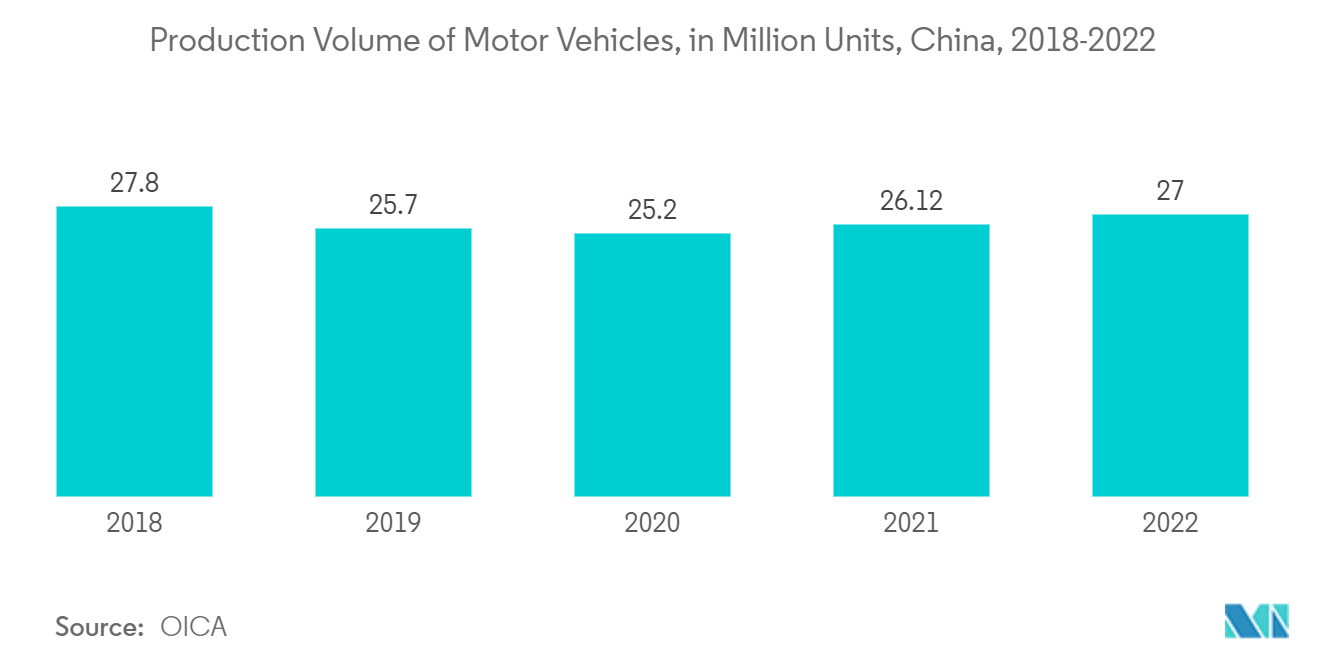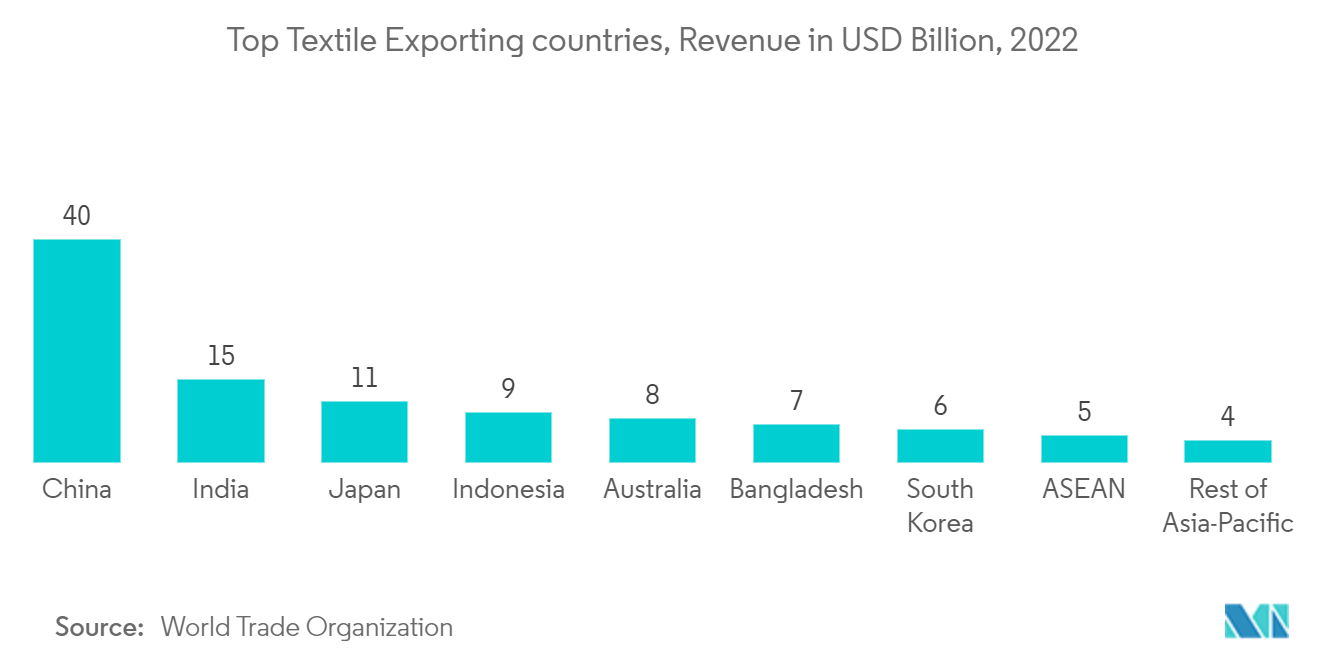Market Trends of Asia-Pacific Pigments Industry
Increasing Demand from the Paints and Coatings Industry
- Pigments are majorly used in paints and coatings production. These are engineered, enabling them to withstand challenging demands without compromising the coating performance. China, India, and South Korea are the largest markets for paints and coatings in the region. The demand for paints and coatings is increasing in the construction and automotive industries in the region.
- China is the largest automotive vehicle manufacturer in the region. According to OICA (The Organisation Internationale des Constructeurs d'Automobiles), automotive vehicle production in China reached a total of 27.02 million units in 2022, an increase of 3% over the previous year for the same period.
- India has become the second-largest automotive vehicle manufacturer in the region. According to OICA, the total production volume of automotive vehicles reached 5.45 million units in 2022, indicating a growth of 24% as compared to 4.39 million units registered in 2021. Thus, the increase in the production of automotive vehicles is expected to drive the demand for automotive coatings, thereby driving the market for pigments.
- The Indian government has been actively boosting housing construction to provide houses to about 1.3 billion people. The country is likely to witness around USD 1.3 trillion of investment in housing over the next seven years, including the construction of 60 million new houses in the country. The availability of affordable housing in the country is expected to increase by around 70% by 2024.
- Similarly, in South Korea, the demand for paints and coatings is increasing from the automotive industries. In 2022, the production of automotive vehicles in the country reached 3.75 million, registering a year-on-year growth rate of 9% from 3.46 million units manufactured in the previous year. The increase in the production volume of automotive vehicles is likely to drive the market for automotive coatings.
- The government also outlined its plan to execute large-scale redevelopment projects aimed at supplying 830,000 housing units in Seoul and other cities of the country by 2025. From the planned construction, Seoul will be getting 323,000 new houses, and 293,000 houses will be built near Gyeonggi Province and Incheon. Significant cities like Busan, Daegu, and Daejeon will also be benefitting with 220,000 new houses in 4 years. Thus, the rising number of construction activities is expected to drive the demand for paints and coatings.
- Thus, the growth of the paints and coatings industry is expected to drive the region's pigments market.

China is Expected to Dominate the Market in the Asia-Pacific Region
- China is one of the significant markets for pigments in the Asia-Pacific region. Pigments are used in various applications, such as paints, coatings, textiles, leather, printing inks, and plastics. In the construction industry, architectural and decorative coatings account for the enormous consumption of pigments in their production.
- China is one of the largest construction markets in the Asia-Pacific region. According to the National Bureau of Statistics of China, the output value of construction works in the country accounted for CNY 31.2 trillion (USD 4.34 trillion) in 2022, as compared to CNY 29.31 trillion (USD 4.084 trillion) in 2021. Additionally, demand is increased for residences that are used as investment properties. China is expected to spend nearly USD 13 trillion on buildings by 2030, creating a positive market outlook for the pigments market.
- Moreover, the automobile industry in the country is witnessing switching trends as the consumer inclination toward battery-operated vehicles is on the higher side. Furthermore, the Chinese government estimates a 20% penetration rate of electric vehicle production by 2025. This is reflected in the electric vehicle sales trend in the country, which went to a record-breaking high in 2022. As per the China Passenger Car Association, the government sold 5.67 million EVs and plug-ins in 2022, touching almost double the sales figures achieved in 2021.
- In China, the textile industry registered significant market growth. According to the National Bureau of Statistics of China, textile production volume accounted for 38.2 billion meters in 2022, compared to 23.5 billion meters during the same period in the previous year.
- In 2022, China was the top-ranked global textile exporter, with a value of approximately USD 148 billion. Similarly, the European Union ranked in second place, with an export value of around USD 71 billion. The export value of textiles is further expected to increase in the coming years, thereby driving the current studied market.
- The plastics industry in China has witnessed increased production outputs over the years due to the growing demand for engineering plastics in high-end industries like automotive assembly and electronic manufacturing. There are over 15,000 plastic manufacturing companies in the country.
- Therefore, the growth in the market for paints and coatings, plastics, and textiles in China is also likely to drive the market for pigments in the country.

